- Home
- slideshows
- miscellaneous
- These 12 airplane interior cabin designs could be the future of air travel, from beds in economy class to an onboard spa
These 12 airplane interior cabin designs could be the future of air travel, from beds in economy class to an onboard spa
One of the most vocal proponents of new aircraft interiors has been aircraft manufacturers themselves, including Airbus.

A fast-spreading trend in redesigning aircraft interiors is proving to be open concept cabins, with some airlines removing the barriers that separate cabins to give their aircraft a more open feel.
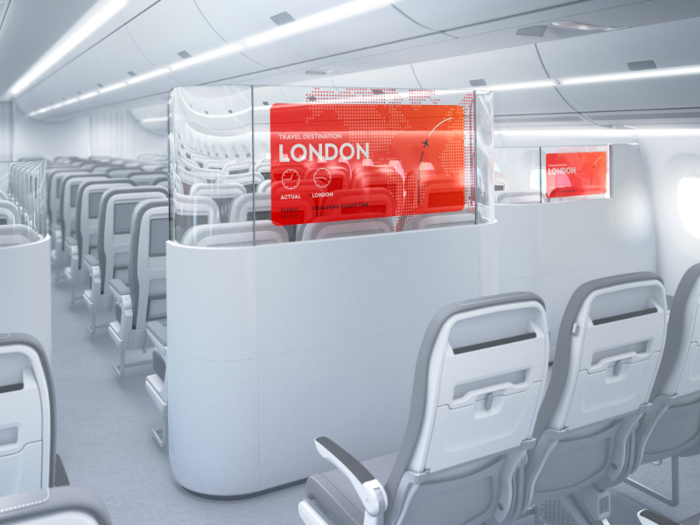
As aircraft are basically elongated tubes, it's easy to feel claustrophobic when an airline chooses to install excessive barriers in between cabins. Though it does stimulate some jealousy from economy class passengers, airlines have been moving towards breaking down barriers between economy and premium cabins.
The move is two-fold: it not only gives the aircraft a more open feel but also gives airlines more room for additional seats. While business class cabins are often divided by galleys that can't be removed, the borders between premium economy and economy are becoming more and more invisible.
Innovators are also looking at tackling comfort in the economy cabin.
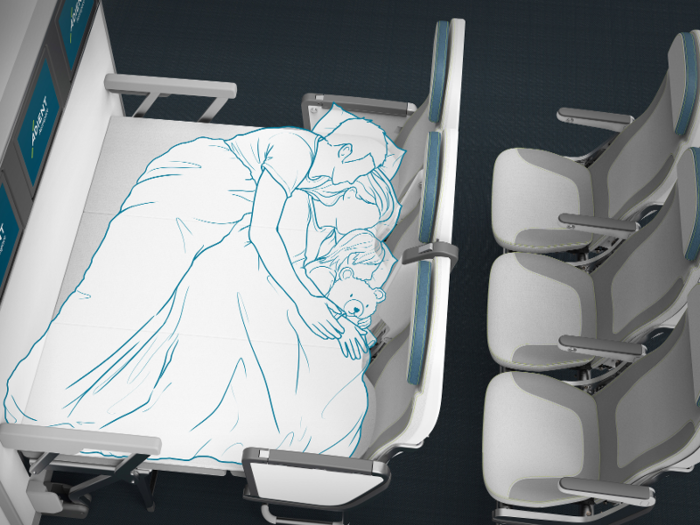
Designed for volume and not personal space, the economy class cabin is where passengers are the most cramped and get the lowest quality of rest. An empty row in economy can be used as a lie-flat seat since one can lay down and stretch out, but beds in the economy take that to the next level.
The trend is already growing in business class, with airlines such as Qatar Airways offering a double bed in its Qsuite product, but economy hasn't been so fortunate. The set up is ideal for family travel and has the added benefit of actually getting a full night's rest in economy.
Similar products are already in operation with Air New Zealand and All Nippon Airways on its Airbus A380 aircraft that fly exclusively between Tokyo and Honolulu. The seats feature sturdier leg rests that can be fixed parallel to the seat cushion to form a couch.
Though already some of the best seats in the house, first-class seating can also get an upgrade.
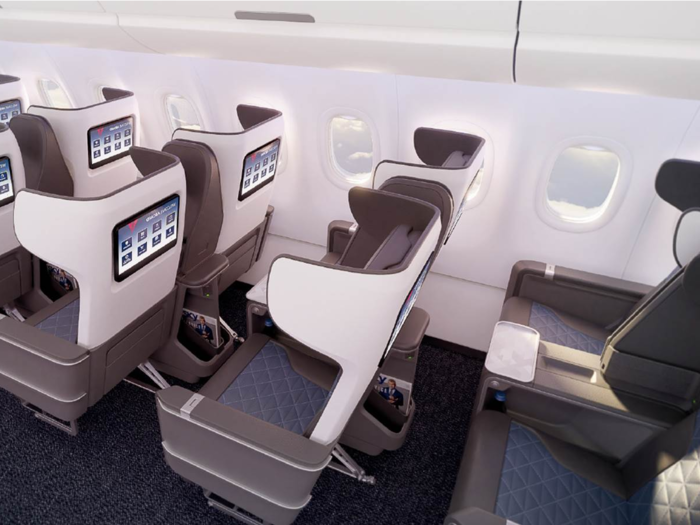
The typical layout of a first-class cabin on a domestic flight on a narrow-body aircraft is 2-2. Though it maximizes the potential revenue in the cabin for the airline, it doesn't offer passengers a great deal of privacy in its current form.
That doesn't mean that all hope is lost as Delta Air Lines recently unveiled its first-class seats of the future. Among its top features is head-level privacy dividers that give the sense of a private experience while sitting next to a fellow traveler.
While some renditions focused on making aircraft cabin's more efficient, others focused on the potential luxuries that aircraft could feature.
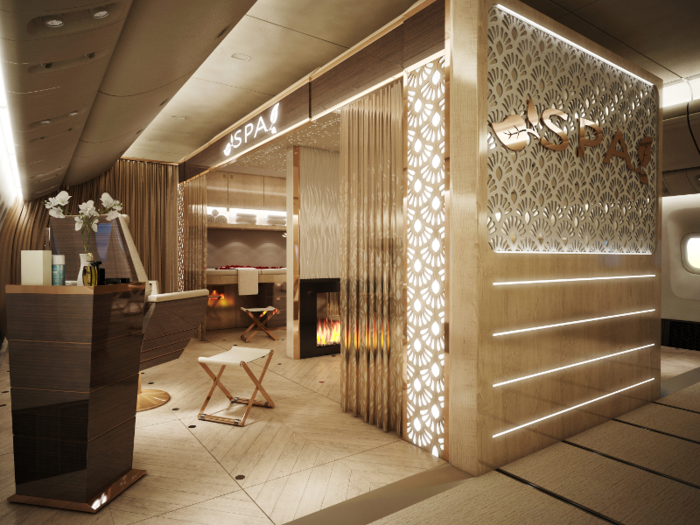
While spas are not commonplace in the skies, other luxuries such as onboard showers and in-flight bars are. Emirates Airlines offers the use of a shower for its first-class passengers as well as an in-flight bar.
Though in-flight bars were once commonplace, only a handful of airlines offer the luxury today. Among them are Virgin Atlantic, Emirates, and Qatar Airways.
Rather than take up space on the plane, some airlines offer spa services in their lounges for passengers to indulge in before the flight.
Some concepts seek to offer panoramic views.
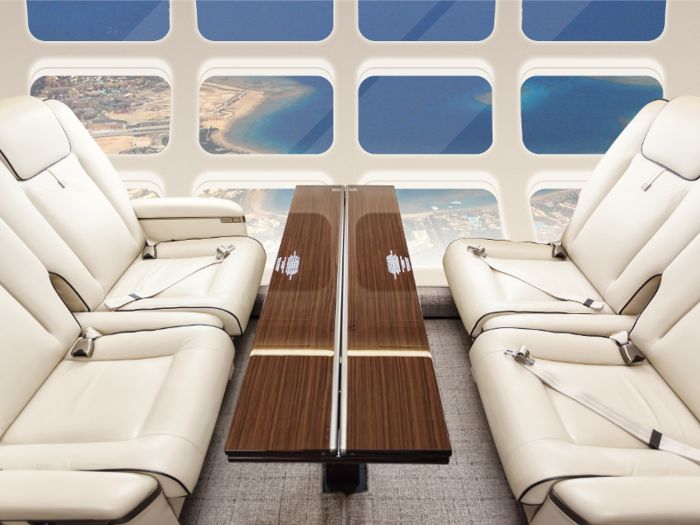
Window seats are already preferred by a large segment of travelers due to the additional entertainment they offer, but traditional airplane windows are only so limited in their size and what you can see out of them.
New planes feature larger windows and exterior cameras, but ideas have been floated to transform cargo areas into observation decks almost, as well as put screens on cabin walls that give the appearance of an all-window aircraft.
Emirates took a unique approach to this challenge, offering virtual window seats in its first-class suites on Boeing 777-200 aircraft using exterior cameras. The optical illusions give middle suites with no direct window access the feeling of being more open, while also offering the in-flight entertainment that only an exterior view can.
Other concepts, however, look more like a hostel or capsule hotels.
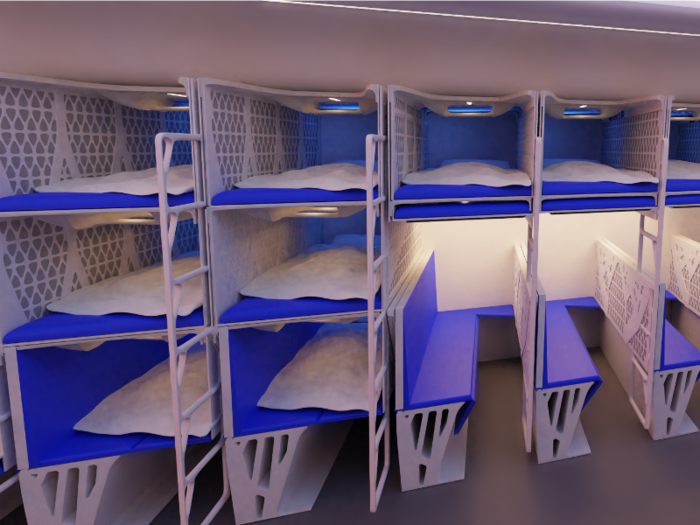
Though they do provide a place for passengers in economy to lay down, the concept does look a bit cramped, rejecting the notion of open concept. The bench seating also doesn't look too comfortable.
Others look like offices.

Business travelers view flights differently from leisure travelers in that the latter often uses the time to relax and sleep, the former views it as an opportunity to get work done. While business class seats typically feature ample space for work, economy seats only offer tray tables that are rendered almost useless when the seat ahead of you reclines.
Having an in-flight conference table would help alleviate that problem, though it would sacrifice more seats than it's probably worth. While the conference table idea itself is not an entirely new concept for aircraft such as the president's Air Force One and other VIP-configured aircraft with bounds of space to fill, other airlines have recognized the need for a place to stretch out and do work someplace that isn't their seat.
Some look like a commuter train at rush-hour.
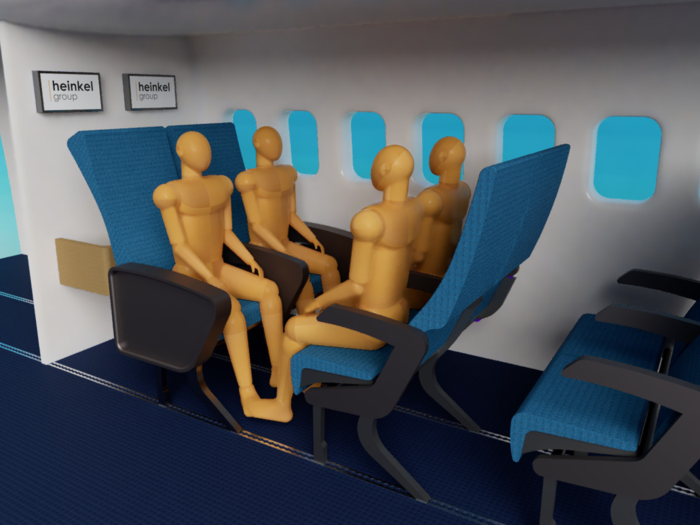
One thing that current cabin products aren't great at is group travel. Linear, forward-facing rows mean that if you're traveling with multiple people, communication or interaction isn't easy.
Reversible seats would allow for passenger groups to face each other and allow for better interaction than if they were scattered across rows. Rear-facing seats used to be common, and still are on passenger trains, but ultimately took up too much space for them to be viable.
While normally overlooked in terms of in-flight comfort, flight crews can also get in on the trend.
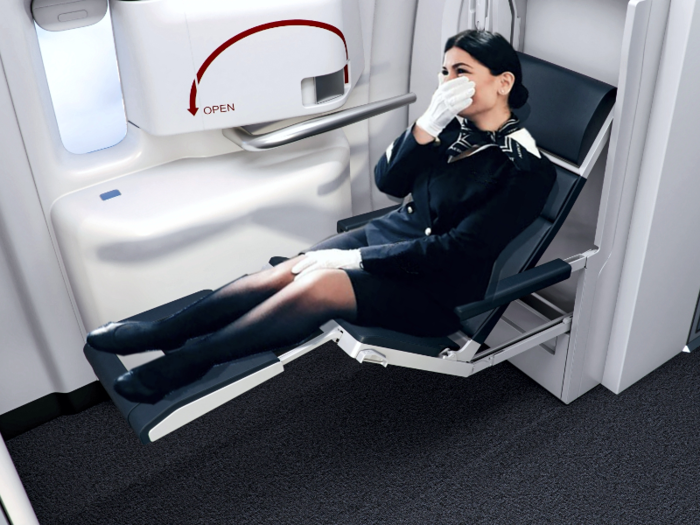
Flight attendants typically sit in cabin jump seats that are low to the ground and don't allow for reclining or stretching out. While larger aircraft have dedicated crew rest areas that feature bunk beds, smaller aircraft don't have the same luxury.
Concepts as simple as a reclining jump seat can go a long way to aid flight attendant comfort, especially on long flights.
Some products of the future are already flying today.
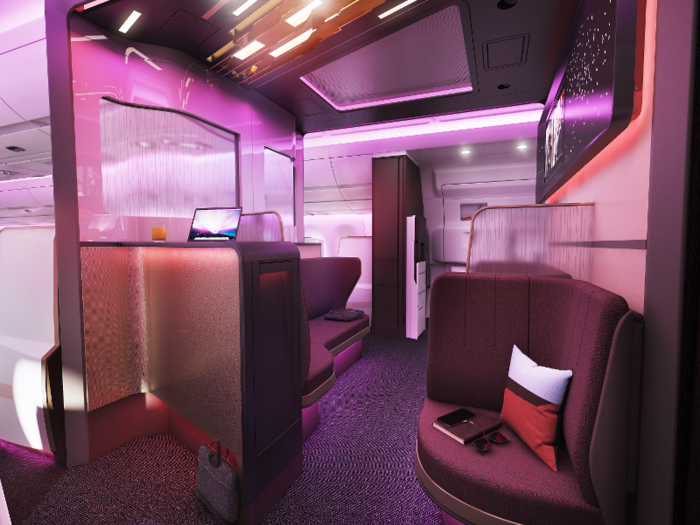
Virgin Atlantic recently introduced The Loft on its newest flagship aircraft, the Airbus A350-1000 XWB, replacing the in-flight bars that the airline is partly known for. Virgin Atlantic decided to offer business-class passengers a place to retreat to whether it be to socialize, work, or even give presentations.
The screens that line the social area can also be connected to a passenger's device, giving them the opportunity to control what's on the screen. Turbulence also isn't a factor as the sofas are fitted with seatbelts so passengers can spend nearly the entire flight there if they wanted.
Along with Virgin Atlantic, All Nippon Airways is showing that the future of air travel is closer than we think.
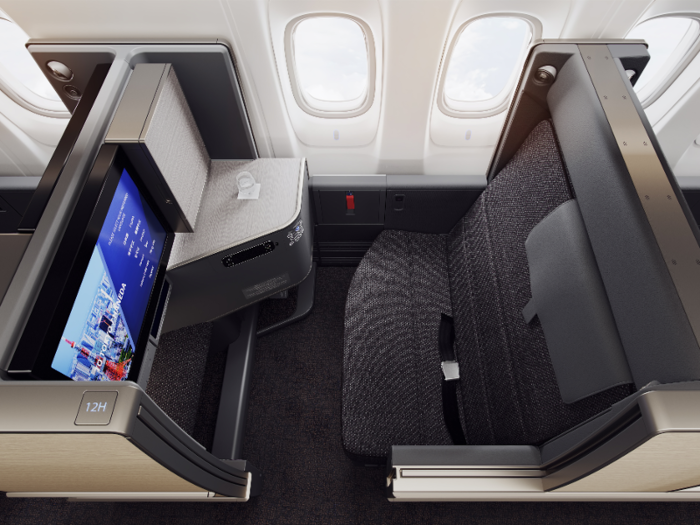
The Japanese airline recently debuted its new business class product, THE Room, on flights to New York and London from Tokyo. The product features one of the largest seats of any business class product, extending the seat cushion from wall to wall.
It not only gives the seat an open feeling, it always helps when the seat is in lie-flat mode as it gives occupants room to stretch out into different sleeping positions. Its in-flight entertainment screen is also one of the largest and highest resolution screens of any business class seat, offering a 4K 24-inch viewing experience.
Popular Right Now
Popular Keywords
Advertisement